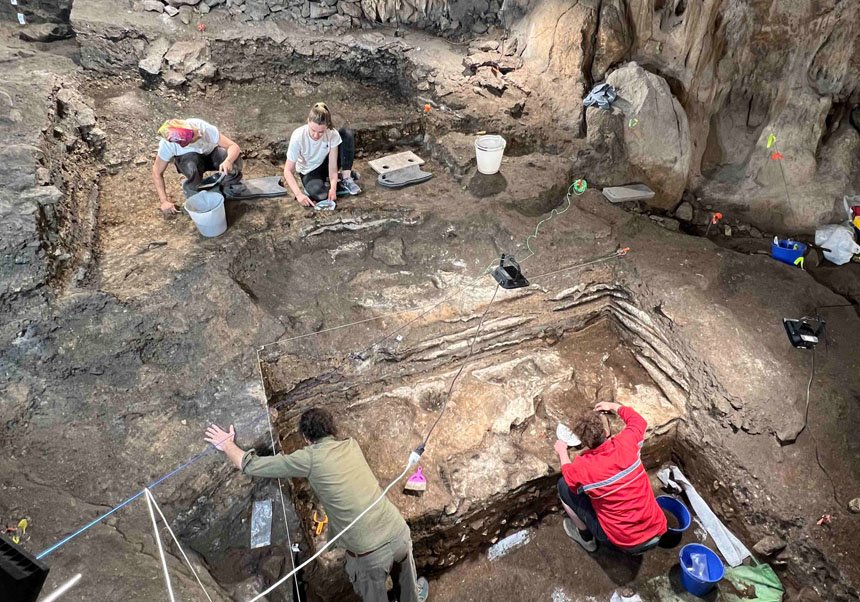
The University of Valencia (UV) is participating in an international research project that has developed a quantitative protocol using mathematical simulation to study population evolution during the Neolithic demographic transition, a key period in human history. The research, published in the journal PNAS, compares the simulations with archaeological data from demographic reconstructions using radiocarbon sums, whereby the number of datings provides an approximation of relative population density in prehistory.
The study adapts equations from well-known mathematical models used to quantify competition between predators and prey (interpreted in the model as human groups), allowing researchers to determine different population growth rates or excess mortality based on the competitive dynamics between the last hunter-gatherer-fishers (considered "prey" in the model) and the farmers and livestock breeders (the "predators" in the model). Three archaeological case studies have been used to assess the model’s results: the eastern Iberian Peninsula (a pioneering region for agricultural settlement in the western Mediterranean around 7,500 years ago), the island of Kyushu (Japan) and Denmark (Scandinavia).
The study, which aims to understand population dynamics during the agricultural transition, also involves researchers from the Max Planck Institute for Evolutionary Anthropology, the University of Cambridge, the University College of London, the University of Bath and the Institute of Archaeology of the Czech Academy of Sciences.
“The shift from a hunter-gatherer way of life to one centred on agriculture and livestock breeding was a momentous milestone that revolutionised the economic, social, cultural and territorial organisation of human societies and, above all, represented a demographic success”, explain Oreto García-Puchol (lecturer in the Department of Prehistory, Archaeology and Ancient History at the UV) and Alfredo Cortell-Nicolau (from the Max Planck Institute for Evolutionary Anthropology).
The development and spread of agriculture and animal husbandry on a global scale occurred through independent invention processes and subsequent expansion via migration and contact with hunter-gatherers through assimilation and acculturation.
Thus, assuming an initial hunter-gatherer population about ten times larger than that of the migrating farmers, the latter could surpass the former within approximately 400 years of initial interaction, depending on the effects of competition between them. A similar pattern is observed in the disappearance/assimilation of hunter-gatherers, which rarely occurs before 300 years of interaction, except in cases where the number of farmers is significantly high, with some hunter-gatherer groups surviving well into the adoption of agriculture.
Regarding mortality, the same simulation estimates that hunter-gatherer populations in the western Mediterranean and Scandinavia had lower mortality rates than those in Japan. Additionally, the mortality rate among farming groups was lower in Mediterranean regions and Japan compared to Denmark.
By comparing the three regions, the study offers a better understanding of the specific characteristics of the process, such as the differences resulting from maritime versus land-based agricultural expansion. Furthermore, this research challenges the current understanding of agricultural diffusion processes by approaching them from the point of view of the demographic and social interaction of human groups rather than solely as a response to changing climatic conditions.
Reference: Cortell-Nicolau, A., Rivas, J., Crema, E.R., Shennan, S., García-Puchol, O., Kolár, J., Staniuk, R., Timpson, A., 2025. «Demografic interactions for the last hunter-gatherers and the first farmers». PNAS March 31, 2025 122 (14) e2416221122. DOI: https://doi.org/10.1073/pnas.2416221122











